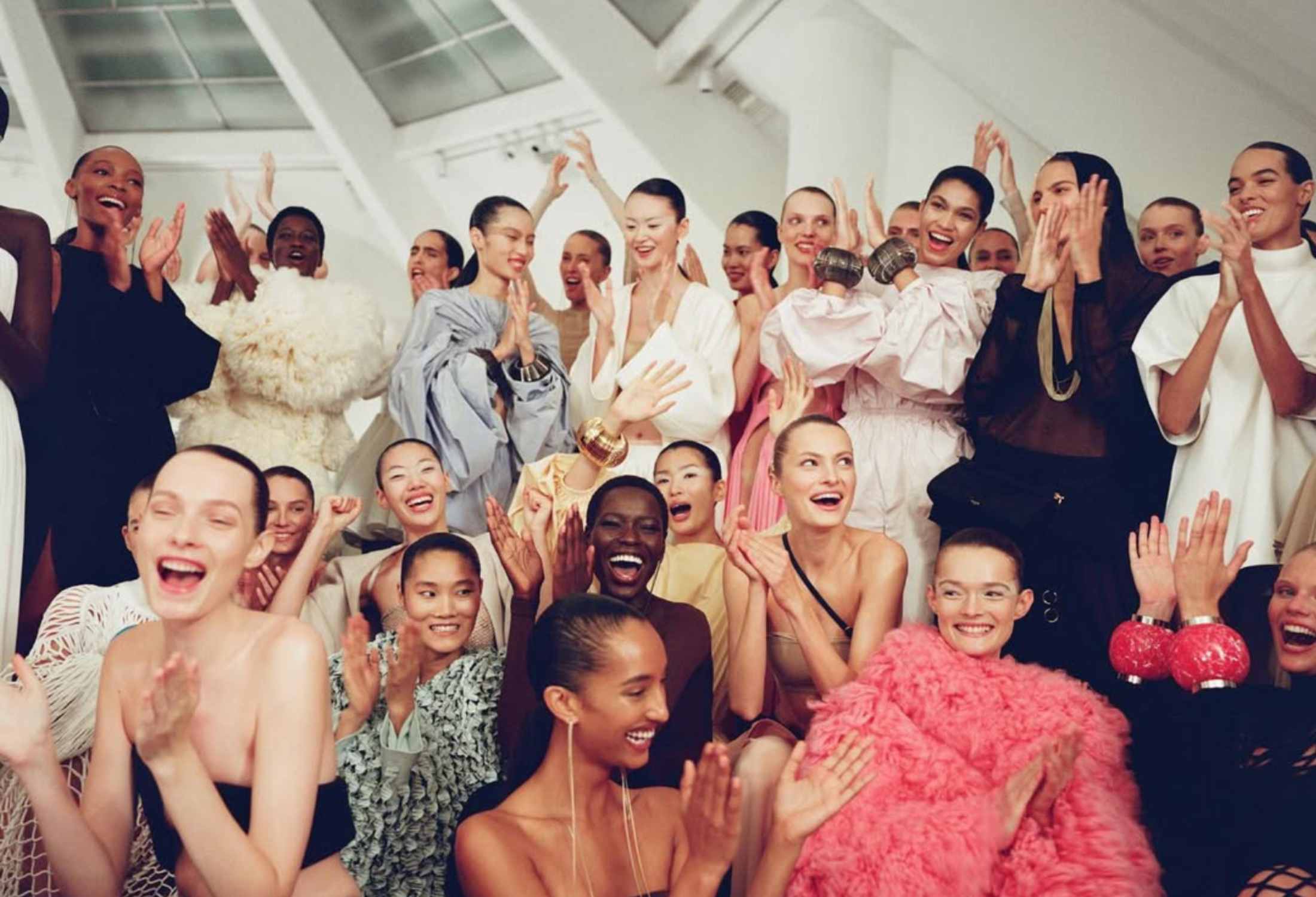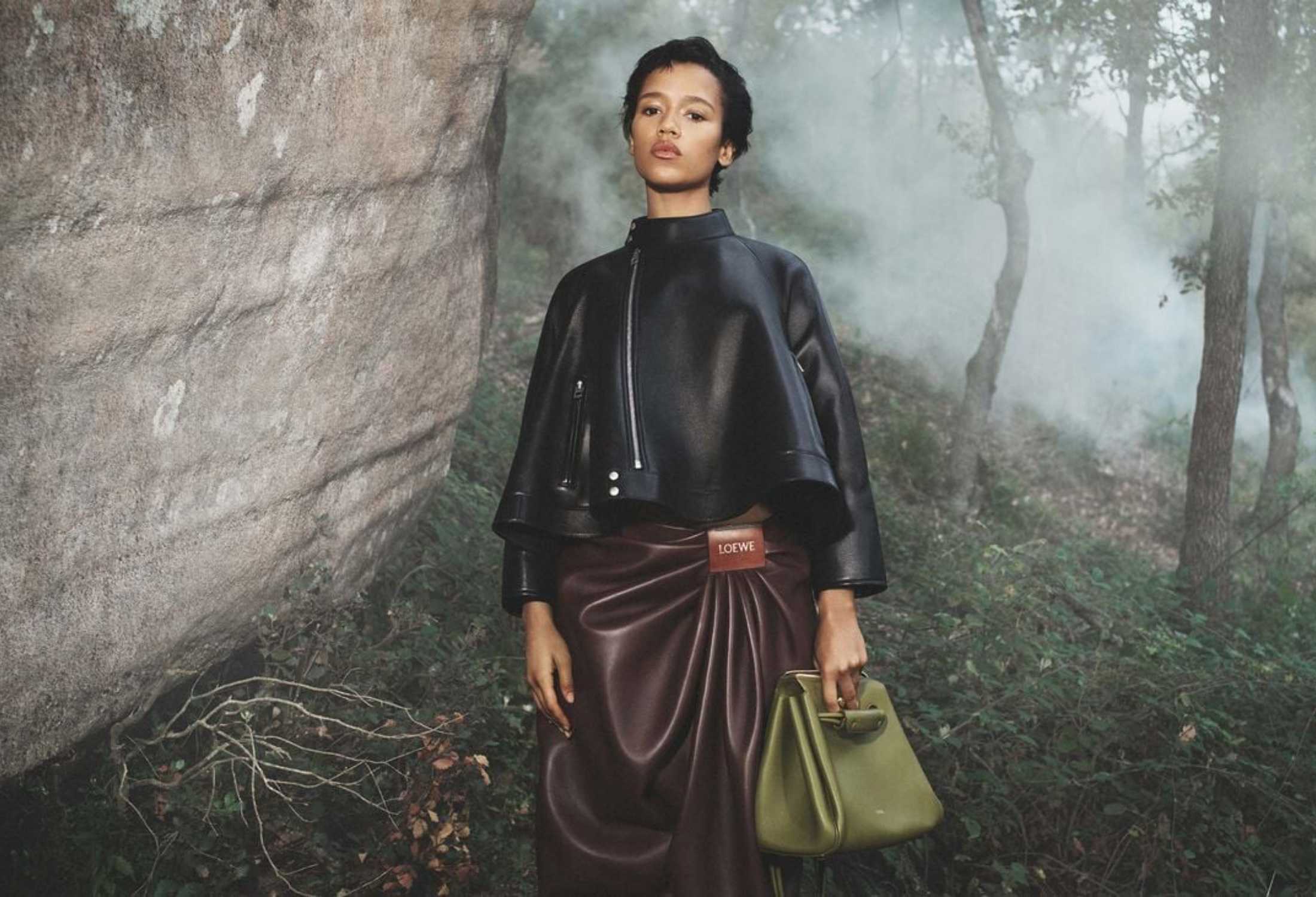WHAT WILL THE NEW LOEWE LOOK LIKE?
WHY JACK MCCOLLOUGH AND LAZARO HERNANDEZ’S LOEWE WILL BE PERFECT
What can we expect from Jack McCollough and Lazaro Hernandez’s Loewe?
Since their appointment at Loewe on Monday, March 24, questions, doubts, and opinions have flooded in. Social media often latches onto a fear of change: mainstream access to fashion is a relatively recent phenomenon, and many younger generations know brands based on what they’ve seen online during their rise—not their full history.

But McCollough and Hernandez are no newcomers to this industry. Their career spans over two decades, during which they’ve become favorites of it-girls, collectors, innovators, and pioneers of contemporary American luxury. With their arrival at Loewe, a new and exciting chapter opens in the Spanish maison’s history.
Founders of Proenza Schouler, McCollough and Hernandez have cultivated an aesthetic rooted in intellectual depth, artistic sensitivity, and material innovation. Their collections are built from books, museums, travel, and textures. Through collections that fuse craftsmanship with cultural pulse, they’ve shaped a wardrobe for the thoughtful, curious, and contemporary woman. A wardrobe that invites reflection.

This blog explores what Loewe might become under their direction: a laboratory of aesthetic thought where intellectual fashion, contemporary art, textile invention, and iconic pieces converge. A natural and deeply stimulating evolution for a house that, under Jonathan Anderson, had already delved into the worlds of craft and avant-garde.
The result won’t be predictable—but it will be powerful, emotional, and filled with the kind of depth that is rarely seen in today’s fashion system.
Intellectual Fashion
With the arrival of Jack McCollough and Lazaro Hernandez as creative directors of Loewe, we may be entering one of the brand’s most conceptual eras. As founders of Proenza Schouler, McCollough and Hernandez—alongside brands like The Row and Tibi—redefined the concept of contemporary luxury in the United States. This was thanks to their unique strategy and approach: intellectual fashion.

From their joint thesis at Parsons to becoming global references, their designs have always reflected deep aesthetic and cultural thought. Both designers have championed, on and off the runway, the value of fashion as a language. In testimony before the U.S. Congress, Hernandez even compared the design process to writing a song or painting a picture. Their vision goes far beyond the final product: each collection is born from research, artistic references, readings, and personal experiences. These garments are not just worn—they are contemplated.
Through Proenza Schouler, they’ve dressed a generation of urban, sophisticated, and inquisitive women—women who value form, but also substance. On their own website, they describe their ideal client as “the intelligent adult woman of today.” In a similar context to Loewe, where craft and innovation constantly coexist, this sensibility promises to bring a stimulating and meaning-rich new phase.
A Passion for Art
If Jonathan Anderson’s Loewe was already synonymous with culture and craft, with Jack McCollough and Lazaro Hernandez it could become a living gallery. Their journey with Proenza Schouler has been deeply shaped by a direct, ongoing, and genuine relationship with contemporary art—not as ornament, but as a structural part of their creative process.
Over the years, McCollough and Hernandez have turned their studio—and their home—into visual archives, surrounded by books, photographs, catalogues, and artworks. They’ve traveled to seek inspiration in museums like Dia Beacon, collaborated with artists such as Harmony Korine, Isa Genzken, and Ron Nagle, and drawn on the visual worlds of Rothko, Frankenthaler, Sheila Hicks, and Cy Twombly.

Their aim is never to produce a recognizable aesthetic, but an emotional atmosphere. As they’ve stated themselves: the goal is not to copy a work, but to be permeated by it.
For McCollough and Hernandez, art is a way of life. In this sense, they’re a perfect fit for a brand like Loewe, which under Jonathan Anderson had already become a prominent platform for art and artists. The Loewe to come could follow this same path, but with a more introspective and experimental spin. Moving from a curatorial lens on art to a more intimate, tactile, and gestural conversation.
In the hands of these designers, Loewe could become a platform for dialogue between pieces, textures, and disciplines. A place where dressing and observing are two sides of the same aesthetic experience.
Textile Innovation
From the start, Proenza Schouler committed to invention and material innovation. Jack McCollough and Lazaro Hernandez create surfaces, structures, textures, and techniques that didn’t exist before. For them, fabric is the starting point of every concept.

Loewe has already explored extraordinary materials and techniques under Jonathan Anderson, and with this new creative direction, its experimental spirit could reach new heights.
At Proenza, materials have been developed ad hoc: Gerhard Richter-inspired jacquards, lacquered lace, bead and crystal embroidery mimicking prints, hand-braided leather, tropical wool, technical bouclés, post-assembled hand-painted denim. They’ve even worked with metallic fabrics that mold to the body—like their “crushed metal” using copper threads—or processes like ice-dyeing, where pigments melt with ice to create one-of-a-kind pieces.

But beyond technical complexity, the duo’s innovation lies in their philosophy: clothing should evolve alongside the person wearing it. It’s not about novelty for novelty’s sake, but about materials that provoke sensations, that interact with the body, light, and movement. A development that nourishes and mirrors the wearer’s intellectual and emotional growth. Pieces born of craft and creative risk.
Applied to their new Loewe chapter, this could spark a new era of tactility—where fabrics feel natural while born from industrial processes, or where artisanal methods are elevated into conceptual art.
Iconic Pieces
To speak of Loewe is to speak of icons. In the past decade, Jonathan Anderson gifted us with instantly recognisable pieces like the Puzzle bag or the revival of the Flamenco. We also saw the Goya and Hammock bags, and a wave of viral ready-to-wear pieces like the tie-dye dress, the nail polish and flower heels, or sculptural leather jackets.
But if there’s something McCollough and Hernandez know how to do, it’s creating cult objects with equal emotional and technical intensity.

In 2008, Proenza Schouler launched the PS1, a school-style messenger bag reimagined for the new wave of New York luxury. At the time, it was the exact opposite of everything dominating the handbag scene. It was relaxed, functional, logo-free—almost an “anti-it bag.”
Its success was such that it opened an entirely new category: a luxury with urban soul, sportier, distinctly American and business-oriented. Then came the PS11, the Tiny, the Courier... each balancing desire and practicality. Their bags defined an era and were praised by figures like Anna Wintour.

But their legacy isn’t limited to accessories. There’s also their architectural dresses, near-sculptural embroidery, rounded-shoulder blazers, skirts with restrained volume—looks that feel like walking installations. All designed to bring the gallery experience into the street. These are garments remembered not for following formulas, but for taking risks.
So what happens when this vision meets the Loewe archive? We may witness the birth of a new generation of legendary pieces: a bag unlike any before, jackets merging sculpture and sensuality, or dresses that defy time.
What’s certain is that under McCollough and Hernandez, Loewe won’t be stuck repeating its past. Just like with Jonathan Anderson, it will remain a continuous invitation to the future. This Loewe will be inquisitive, reflective, and intentional. A Loewe not only to look at—but also to hear, to sense, and to read.



